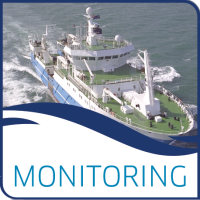Underwater sounds have been shown to injure or disturb cetaceans, and around the world, cases have been documented of cetacean mass strandings that have been linked to underwater noise, across many species. The Scottish Government’s Marine Directorate-Science, Evidence, Data and Digital Portfolio has reviewed several acoustic information sources available around the time of the pilot whale mass stranding at Tolsta on the east of the Isle of Lewis in July 2023. This includes analysis of passive acoustic data collected at a site (Tolsta site) approximately 12.5?km offshore of the beach where the stranding occurred, and at a site on the west of the Lewis (Garenin site). Data from the week prior to, and the day of the stranding were analysed. Both broadband acoustic data and cetacean click detections were available around the time of the stranding event and the report seeks to provide an account of (1) the presence of cetaceans around the time of the stranding, and (2) the presence of any identified sounds from presumed anthropogenic sources. It also summarises activities that were taking place in the region at the time, that may have generated underwater noise.
At the Tolsta site, cetaceans were detected regularly throughout the analysis period on both the broadband and click detector recorders. However, these detections could not be attributed to specific cetacean species, except to delphinids or porpoises. A total of 1,330 unique cetacean detection events were identified throughout the analysis period in the broadband data. Shipping noise was commonly encountered at the Tolsta site, and impulsive sounds were found in the recordings at around 01:00 UTC and 05:00 UTC on 16th July. Impulsive sounds were not found at other times. Given the frequencies and pulse patterns of these sounds, and that they decreased in amplitude over the duration of the recording, the sounds appear to be consistent with echosounders which are commonly found on vessels throughout Scottish waters, which would decrease in amplitude if the vessel was moving away from the acoustic recorder. However, the source of the detected sounds cannot be confidently verified given the lack of vessel presence at the time in the Automatic Identification System (AIS) and Vessel Monitoring System (VMS) evidence. From the data gathered, combined with the uncertainty around the time of the stranding, it is not possible to determine whether the pilot whales were in the area to hear these sounds, or what effect they may have had on their behaviour if they were. However, echosounders are widely used by vessels, and would not be unusual sounds in the marine environment.
The recordings from the Garenin site on the west of Lewis included high levels of shipping noise and also cetacean detections, but at much lower levels than those seen at the Tolsta site. Other biological sounds were also recorded, including sounds that are considered likely to have been from fish such as haddock.
In reviewing activities that could have produced underwater noise, MD-SEDD approached the Ministry of Defence (MOD), which reported activity in the area. However, the information provided by the MOD does not suggest any obvious activity that may have been a factor in the strandings, such as the use of active sonar or explosives, which have previously been linked with cetacean strandings around the world. Activities taking place under licence included a geophysical survey at a wind farm lease area on the west of Lewis. Much of that activity was carried out at very high frequencies, well outside of pilot whale hearing ranges. Sound from the geophysical survey were not detected in the acoustic data collected by MD-SEDD at the Garenin site.
Data and Resources
- Report: Report on Passive Acoustic Underwater Monitoring Data and Potential Sources of Noise in Relation to a Mass Stranding of Long-Finned Pilot Whales (Globicephala melas) on Isle of Lewis, July 2023html
Access the report on the Scottish Government publications
Go to resource
| Field | Value |
|---|---|
| Publisher | |
| Modified | 2025-06-26 |
| Release Date | 2025-06-25 |
| Identifier | e86d3019-3228-4f12-ba24-ab4df48675dd |
| Spatial / Geographical Coverage Area | POLYGON ((-7.00927734375 58.117746832083, -7.00927734375 58.570355994465, -5.9710693359375 58.570355994465, -5.9710693359375 58.117746832083)) |
| Language | English (United Kingdom) |
| License | UK Open Government Licence (OGL) |
| Data Dictionary | MD-SEDD has been operating an array of passive acoustic monitoring (PAM) recorders across Scottish shelf waters since 2022 as part of the SPAN project. At each site within SPAN, PAM moorings comprising an acoustic release (VEMCO AR), a broadband sound recorder (Sylence-LP; RTSYS), and a cetacean click detector (F-POD; Chelonia Ltd.) have been deployed to collect data for up to six months at a time (Figure 2). Broadband sound recorders are programmed to record with a duty cycle of 10 minutes on and 20 minutes off to maximise battery life and memory capacity. They utilise a sample rate of either 64 or 128 kHz, facilitating the recording of sounds between 5 Hz and 32 kHz, and 5 Hz and 64 kHz, respectively (the highest frequency at which sounds can be recorded is half of the sample rate). The automated cetacean echolocation click detector, F-PODs, continuously log the occurrence of cetacean echolocation clicks. F-PODs have a maximum detection range of 400 m for harbour porpoises and 1 km for delphinids (Chelonia Ltd.). They do not record sounds but note each time they detect a sound that could be an echolocation click. The devices also log detections of some echosounders and sonar. |
| Contact Name | Scottish Government, Marine Directorate |
| Contact Email | |
| Public Access Level | Public |


